Ombu tree
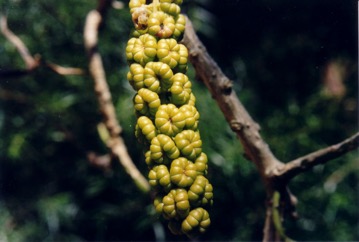
A tropical plant. It can tolerate salty air near sea-sides. It needs mild climates and is damaged by severe frosts. It is drought tolerant. It can grow in an average, well-drained soil. It needs full sun. In Argentina it grows from sea level to 1,500 m above sea level. In Melbourne Botanical Gardens. It suits hardiness zones 10-11.
Also known as:
Alho-cebola, Belhambra, Bella sombra, Caruru-guassu, Cebolao, Fitolacca arborea, Imbu, Maria-mol, Peudo, Pohon gajah, Pohon ombu
Synonyms
- Phytolacca arborea Moq. [Invalid]
- Phytolacca populifolia Salisb. [Illegitimate]
- and others
Edible Portion
- Fruit - Caution, Leaves
Where does Ombu tree grow?
Found in: Africa, Argentina, Asia, Australia, Bolivia, Botswana, Brazil, Colombia, East Africa, Ecuador, Eswatini, Hawaii, India, Indonesia, Mediterranean, North America, Pacific, Paraguay, Peru, SE Asia, South Africa, Southern Africa, South America, Swaziland, Uruguay, United States, Zimbabwe
Notes: There are 25 Phytolacca species.
Growing Ombu tree
Cultivation: Plants are grown from seed. The ripe fruit are harvested from the tree and allowed to decompose for a few days before removing the seed. The seeds are washed out in running water and dried lightly. Seed can be stored for about 1 year. Fresh seed should be planted. They germinate in 8-16 days. Seedlings can be transplanted into the field after 4 months. Trees can be grown from cuttings.
Edible Uses: CAUTION: The fruit are poisonous. The attractive smell encourages children to eat them with poisonous results. The young leaves and shoots are cooked and eaten as a vegetable. The fruit are made into jellies and jams. They are also used to give red colour to wines.
Production: The tree grows rapidly. They can be 4-5 m tall in 2 years.
Nutrition Info
per 100g edible portion| Edible Part | Energy (kcal) | Protein (g) | Iron (mg) | Vitamin A (ug) | Vitamin c (mg) | Zinc (mg) | % Water |
|---|---|---|---|---|---|---|---|
| - | - | - | - | - | - |
Ombu tree Photos

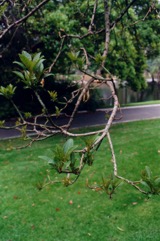
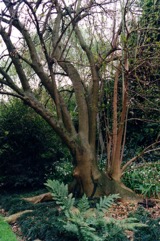
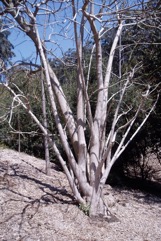
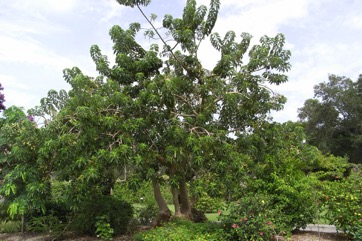
References
Ambasta, S.P. (Ed.), 2000, The Useful Plants of India. CSIR India. p 453
Barwick, M., 2004, Tropical and Subtropical Trees. A Worldwide Encyclopedic Guide. Thames and Hudson p 321
Blamey, M and Grey-Wilson, C., 2005, Wild flowers of the Mediterranean. A & C Black London. p 41
Cundall, P., (ed.), 2004, Gardening Australia: flora: the gardener's bible. ABC Books. p 1038
Facciola, S., 1998, Cornucopia 2: a Source Book of Edible Plants. Kampong Publications, p 168
Fox, F. W. & Young, M. E. N., 1982, Food from the Veld. Delta Books. p 292
Grandtner, M. M. & Chevrette, J., 2013, Dictionary of Trees, Volume 2: South America: Nomenclature, Taxonomy and Ecology. Academic Press p 496
Hibbert, M., 2002, The Aussie Plant Finder 2002, Florilegium. p 232
Kermath, B. M., et al, 2014, Food Plants in the Americas: A survey of the domesticated, cultivated and wild plants used for Human food in North, Central and South America and the Caribbean. On line draft. p 654
Kinupp, V. F., 2007, Plantas alimenticias nao-convencionais da regiao metropolitana de Porto Alegre, RS, Brazil p 91
Llamas, K.A., 2003, Tropical Flowering Plants. Timber Press. p 312
Lord, E.E., & Willis, J.H., 1999, Shrubs and Trees for Australian gardens. Lothian. p 63
Lorenzi, H., 2002, Brazilian Trees. A Guide to the Identification and Cultivation of Brazilian Native Trees. Vol. 01 Nova Odessa, SP, Instituto Plantarum p 307
Morley, B.D., & Toelken, H.R., (Eds), 1983, Flowering Plants in Australia. Rigby. p 68
Plants for a Future database, The Field, Penpol, Lostwithiel, Cornwall, PL22 0NG, UK. http://www.scs.leeds.ac.uk/pfaf/
Ruiters-Welcome, A. K., 2019, Food plants of southern Africa. Ph.D. thesis. Univ. of Johannesburg p 86
Schuler, S., (Ed.), 1977, Simon & Schuster's Guide to Trees. Simon & Schuster. No. 141
Sp. pl., ed. 2, 1:632. 1762
Staples, G.W. and Herbst, D.R., 2005, A tropical Garden Flora. Bishop Museum Press, Honolulu, Hawaii. p 452
Sukarya, D. G., (Ed.) 2013, 3,500 Plant Species of the Botanic Gardens of Indonesia. LIPI p 446
Swaziland's Flora Database http://www.sntc.org.sz/flora
Tanaka,
World Checklist of Useful Plant Species 2020. Royal Botanic Gardens, Kew
www.colecionandofrutas.org